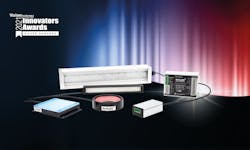Q&A Series: Basler AG’s Holger Singpiel looks back at machine vision over the last 25 years and toward the future
Vision Systems Design celebrates its 25th anniversary in 2021. What are some of the most interesting and notable machine vision advancements you’ve seen since you entered the space?
We have been in the machine vision business with Basler for over 30 years now. The most important factor for the increasing spread of vision technology was the continuously improving performance of processor and image sensor hardware, which enabled the use of ever more powerful image evaluation software, which helps solve increasingly complex tasks. The simultaneous widespread introduction of inexpensive technology from the consumer goods market into machine vision (such as PC technology, Gigabit Ethernet, USB interfaces, or CMOS image sensors) has ensured that this increase in performance has become available without an increase in costs. Finally, the integration costs for vision technology have been reduced by easy-to-use standard hardware and software.
What sort of advancements are you most looking forward to in the future?
The use of deep learning in computer vision increases the precision in industrial applications and enables many new applications that were not possible before, such as the classification of cells in the field of medicine and life sciences. New standards such as CoaXPress 2.0 help to achieve high frame rates and high resolutions, and new software solutions make computer vision more accessible to users through ease of use.
What are you most excited about at your company right now?
With the transformation of Basler from a camera manufacturer to a full-range supplier, we have grown very strongly and can now benefit from the synergies that have resulted from merging with other companies. In addition, we can now offer our customers complete vision solutions in the embedded area, which gives us completely new possibilities in terms of consulting and service for our customers.
What is your latest product and for what reason was it developed?
As a result of our transformation into a full-range supplier, many products have become even more important to us. On the one hand, I highlight the Basler SLP lighting solutions, for which we were recently named a Vision Systems Design 2021 Innovators Award Honoree. On the other hand, I would also like to mention the CoaXPress 2.0 standard, which, for example, in combination with our new boost camera with 20, 32 and 45 MPixel resolution, enables outstanding image quality with a higher frame rate and lower costs.
In which areas or applications do you see the most growth, in terms of machine vision/imaging?
In many areas of everyday life, computer vision will play a bigger role in the future. The smart industry will rely heavily on vision solutions. We also see growing areas of application in agriculture and logistics.
Are there any recent examples of Basler AG developing new products for popular specialized imaging technologies?
Basler AG is working on an artificial intelligence (AI) platform for machine vision for industrial applications, which is based on the AI and machine learning services of Amazon Web Services (AWS). It enables customers to smoothly deploy AI-based applications, for example in the areas of quality control and occupational safety or in improving efficiency in supply chains. Basler's AI platform for machine vision closes the gap between cloud services and local image processing. It integrates vision hardware and edge computing with cloud services to provide end-to-end machine learning solutions. With the integration of the AWS Panorama Device SDK, the Basler platform enables the use of a unified architecture to address different application areas.
What is new and interesting in machine vision today?
The interaction of the components and the standards are being simplified more and more. Our easy-to-use pylon software is becoming an increasingly important key to controlling the entire system. This means that users no longer require so much in-depth knowledge in different specialized fields, which significantly lowers the overall hurdles for the use of computer vision.

